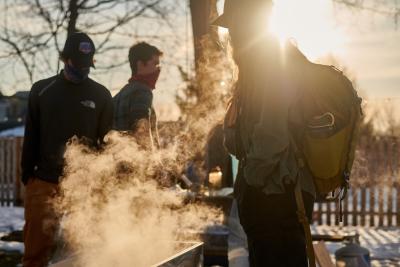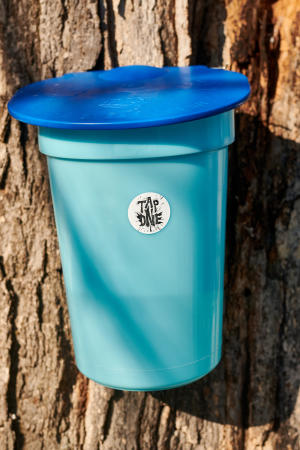The history of maple syrup in Vermont dates back to the pre-colonial era when the Native American tribes living in the region were already tapping maple trees and processing the sap into syrup and sugar. When the first European settlers arrived in the area in the 17th century, they learned from the Native Americans how to tap the trees and make maple syrup. However, it was not until the mid-19th century that maple syrup production became a significant industry in Vermont.
were already tapping maple trees and processing the sap into syrup and sugar. When the first European settlers arrived in the area in the 17th century, they learned from the Native Americans how to tap the trees and make maple syrup. However, it was not until the mid-19th century that maple syrup production became a significant industry in Vermont.
In the early years, maple syrup was primarily produced for home use and local consumption. However, as transportation improved and demand for maple syrup grew, Vermont farmers began to tap more trees and expand their operations. By the early 20th century, Vermont was the leading producer of maple syrup in the United States. In the 1930s, the state established a grading system for maple syrup, which is still in use today, to ensure consistent quality and to help market the product.
In the decades that foll owed, technological advancements such as plastic tubing, vacuum pumps, and reverse osmosis have made maple syrup production more efficient and increased yields. However, many Vermont maple syrup producers still use traditional methods, including hand-tapping and wood-fired evaporators.
owed, technological advancements such as plastic tubing, vacuum pumps, and reverse osmosis have made maple syrup production more efficient and increased yields. However, many Vermont maple syrup producers still use traditional methods, including hand-tapping and wood-fired evaporators.
Today, Vermont produces over 2 million gallons of maple syrup annually, making it the largest producer in the United States. Maple syrup is an important part of Vermont's economy and culture, and the state celebrates its heritage each year with the Vermont Maple Open House Weekend, which takes place in late March and early April, and allows visitors to tour maple sugarhouses and sample maple products.
Looking to learn how to make maple syrup? Here's how!
-
Gather sap: In early spring, when the daytime temperatures start to warm, maple trees start producing sap. The sap can be collected by drilling a hole in the trunk of the tree and inserting a spile, which is a small, hollow tube that allows the sap to flow out. Metal or plastic buckets are often used to collect sap.
-
Boil the sap: Once your bucket is full, transfer to a large pot or evaporator. The sap is then boiled over an open fire or on a stove until the water content reduces, and the sap thickens.
-
Check the density: As the sap boils, you need to check the density with a hydrometer or refractometer. The syrup is ready when it reaches a density of 66 Brix or 66% sugar content.
-
Filter the syrup: Once the syrup reaches the desired density, it needs to be filtered to remove any impurities. You can use a cheesecloth or filter paper to do this.
-
Bottle the syrup: After filtering, the syrup is poured into sterilized bottles while still hot. The bottles are then sealed, labeled, and stored in a cool, dark place.

-
Enjoy the syrup! Maple syrup can be used in a variety of ways, our favorites including a homemade blueberry pancakes or waffles, sugar-on-snow, maple creemees! As a sweetener in coffee or tea. However, no one would judge you if you choose to experiment!



